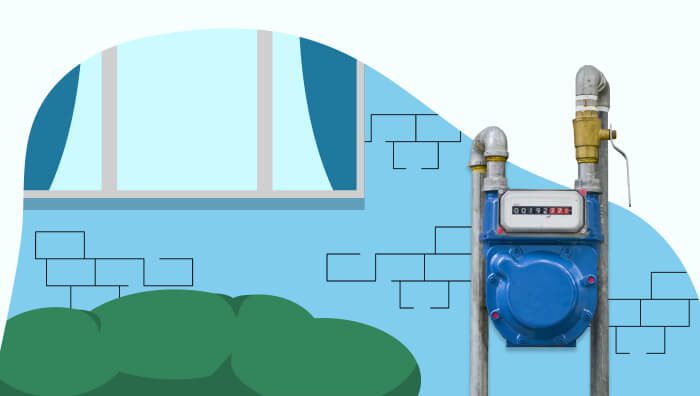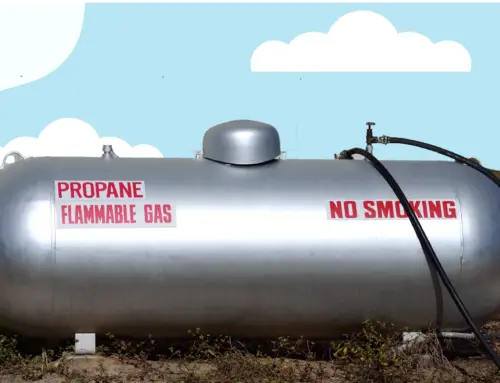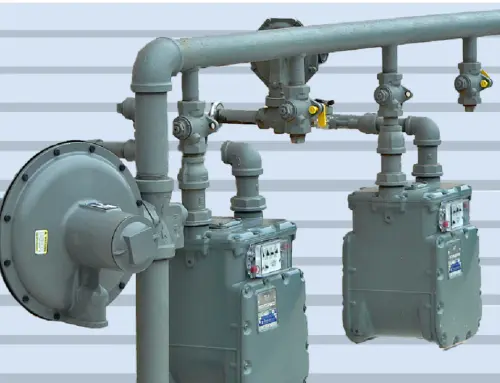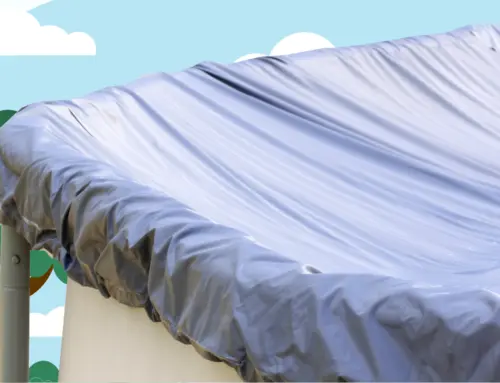Why Is My Gas Bill So High? 17 Tips for Reducing Your Gas Bill
by Tyler Castle
10.7 min read

Are you concerned about possible price hikes for your gas bills? Or are you already experiencing higher gas bills than you’d like? It’s likely because your costs are a bit more complicated than just the price of natural gas.
Cheaper gas doesn’t always equal cost savings for consumers or their families, as changes in residential gas prices will always lag behind wholesale spot prices. That means even if your natural gas supplier is paying less when they purchase natural gas, you might not see a similar price drop in your gas bill until months later — or even at all.
Fortunately, whether you’re in an apartment or a house, there are steps you can take to help keep your gas bill low. Read on for an explanation of what causes gas bills to fluctuate and learn our top tips for how to lower your gas bill.
Why is my gas bill so high?
Increased demand will always increase costs and, according to the U.S. Energy Information Administration (EIA), natural gas is the most widely used residential heating fuel in the country. Nearly half of all U.S. households — 46% — primarily use natural gas to heat their homes, which can cause demand to skyrocket during bad weather.
The severity of your weather throughout the year will largely depend on which area of the country you live in. Using the National Oceanic and Atmospheric Administration’s Regional Mapping tool, we can see that the Northern Rockies and Plains and Upper Midwest regions experience the coldest winter temperatures on average. It shouldn’t be a surprise that homes in the Midwest consume 34% more natural gas than the national average. Many Midwest homes also make use of space heaters, which account for 53% of all residential energy consumption in the region.
Variance in temperatures plays a significant role in the year-to-year cost of your gas bill
Here’s an example of how the EIA predicts winter heating prices can change if seasonal temperatures are either 10% colder or warmer than the estimated average.
How Natural Gas Fuel Heating Costs Can Vary*
| Winter Base Cost | 10% Colder Temps | 10% Warmer Temps | |
| Northeast | $761 | $827 | $719 |
| Midwest | $581 | $618 | $561 |
| South | $494 | $527 | $476 |
| West | $590 | $644 | $552 |
| U.S. | $601 | $647 | $574 |
* Chart sourced from U.S. Energy Information Administration and are based on estimated U.S. average household natural gas expenditures. Amounts are in nominal dollars.
If you’re looking for ways to predict the temperatures of an upcoming season, use any of the following resources — all of which are regularly updated:
- U.S. Energy Information Administration Short-Term Energy Outlook
- National Oceanic and Atmospheric Administration’s Climate.gov
- The Old Farmer’s Almanac Extended Winter Forecast
While you can’t always predict the weather and natural gas supply, there are a few factors that could be affected your gas bill which you can control:
- Aging or old appliances — Outdated or unmaintained heating systems may be less efficient and consume more gas to produce the same amount of heat. Similarly, the use of older gas stoves, ovens, and dryers can add more to your gas bill in comparison to new appliances which are more energy efficient.
- Poor insulation and air leaks — Poor insulation in your home allows heat to escape, causing your heating system to run more frequently to compensate. In the same way, drafts and air leaks around doors and windows let cold air in and warm air out.
- Blocked vents and impeded airflow — A dirty furnace or heating system filter can restrict airflow, making your heating system less efficient. Leaky or poorly insulated ductwork can also result in heat loss before the warm air reaches the rooms in your home.
- High water temperature — If you have a gas water heater, using a lot of hot water, turning up the temperature to a very high heat, or having an inefficient water heater can contribute to higher gas bills.
- Wasted energy — Heating your house while you’re away or not lowering the temperature of your thermostat while you sleep creates heat that you’re not really using, and therefore wasting. Programming your thermostat to be at the “ideal temperature” can help save energy and money.
- Variable supplier prices — If your natural gas provider charges you variable rates, then you’re paying more as temperatures drop and the people around you use more gas, increasing demand.
Addressing any of these variables can pay off long term through more efficient heating and more consistent costs. Here are some specific actions you can take to lower your gas bill, both during the winter months and by preparing during the summer and fall.
Top 11 tips to lower your gas bill:
- Regulate your thermostat to the ideal energy-saving temperature — The U.S. Department of Energy (DoE) recommends setting the thermostat temperature between 68–70 degrees while you’re at home. Dress warmly and keep the thermostat to the lower end of 68 degrees to reduce gas consumption and help save money.
- Turn off the heat when you’re not at home or while asleep — Reducing your thermostat setting when you’re asleep or away can result in significant energy savings. Drop the thermostat by 4 degrees overnight and by 8 degrees when you leave the house to reduce heat loss.
- If you have radiators, install radiator valves — If you have radiators heating your rooms, you can adjust the amount of heat you use by installing radiator valves on every radiator in your home. These self-regulating valves allow you to better control the amount of hot water that goes to the radiator.
- Use a space heater to warm up a small area — If you spend most of your time in one room, consider using a space heater to heat that specific space instead of warming the entire house. Be careful! Personal heaters use up a lot of energy compared to the amount of heat they put out, so they’re an inefficient way of warming up large rooms. Use them only to heat up a small area that you’re using.
- Lower your water temperature — Consider lowering the temperature setting on your water heater to save energy. You can also try to use hot water sparingly and even consider installing a water heater timer to reduce energy consumption for hot water.
- Reverse the rotation of your ceiling fans — Did you know that ceiling fans rotate in both directions? While the counterclockwise downward draft cools a room, reversing the direction of your ceiling fan to turn clockwise will circulate warm air downward, helping to distribute a room’s heat more effectively.
- Close curtains at night, open them in the day — Open your curtains and blinds during the day to let sunlight in for natural heating. Then, be sure to keep them closed at night to trap heat inside. You can also hang up heavier winter or thermal curtains through the winter months to trap in more heat.
- Dress warmly while in the house — Break out the sweaters and socks. Layer your clothing while in the house to trap more of your body heat. Use warm blankets while in bed or on the couch to stay comfortable without needing to raise the thermostat.
- Reuse heat generated by appliances — Every bit helps. After turning your dryer or oven off, keep the door open to circulate that latent heat into the area. Just remember not to use your oven or stove as a heater, as that can lead to serious health issues and safety issues.
- Use a humidifier to add some humidity to the dry winter air — Dry air feels cooler, so using a humidifier during winter months can help you feel warmer at lower thermostat settings.
- Be careful about your use of a fireplace — If you have one, it’s tempting to use the fireplace during winter. But much of the heat produced in your fireplace actually just goes out the chimney. Worse, at the same time, it draws cold air in through leaks in your home’s walls and windows. Be sure to clean and properly maintain your fireplace, but try to use it sparingly.
There are additional steps you can take any time of year to proactively prepare your house for bad weather and colder temperatures. While you can take these actions during winter months, planning ahead and doing them in the spring or summer can make it easier and less expensive.
6 year-round preparations that can lower your gas bill:
- Perform an energy audit — Don’t assume where you might be losing heat around your house, perform an energy audit to identify specific areas where you can make improvements. You can pay for a professional energy audit or follow the DoE’s DIY Home Energy Assessment guide.
- Search for and block air leaks — Identify and seal any gaps or cracks in doors, windows, and walls to prevent cold drafts from entering your home. You’ll want to use rubber weather strips or pressure-sensitive plastic around your window and door frames, insulation around your electrical outlets, and canned spray foam or caulk around any piping or vents.
- Ensure your home is well insulated — Check the insulation around your home, especially in the attic, walls, and basement. Adequate insulation helps to retain heat, reducing the need for constant heating.You may be surprised to find that you’ll need to enhance or update older insulation in certain areas of your home.
- Invest in a smart or programmable thermostat — A programmable thermostat allows you to automatically lower the temperature when you’re asleep or not at home. You can program it to raise the temperature before you wake up or return home. You can even track your energy usage and adjust temperature settings based on environmental factors.
- Perform furnace maintenance and replace your air filters — Regular maintenance, including cleaning or replacing filters, ensures that your heating system operates efficiently and can also prevent breakdowns. Have an HVAC technician inspect and service any gas furnaces or appliances. You’ll also want to replace your furnace air filters every 90 days, usually around when the seasons change.
- Replace or retrofit your older appliances — According to energy.gov, older heating systems are more likely to lose energy generated by fuel. The efficiency of a furnace or boiler is measured by its annual fuel utilization efficiency (AFUE) rate. While older heating systems have a low AFUE rate of 56% to 70%, newer heating systems can provide a much higher AFUE rate of 90% to 98.5%. That means less heat lost and more money saved. Not ready to buy a new furnace or boiler? You do have retrofitting options to increase their efficiency.
Finally, if you’re looking to keep your gas plan predictable, then you can also consider enrolling in either an unlimited or fixed-rate natural gas plan. Switching to an unlimited natural gas plan allows you to set a flat monthly supply cost on your monthly bill.* Similar to how an unlimited cell phone plan works, you simply pay the same amount every month no matter how much you use. You can also consider a fixed-rate natural gas plan which allows you to lock in a lower gas rate for a longer period of time to avoid rising energy costs.
* Restrictions apply. Enrollment based upon program eligibility. Customers using more than 125% of normal monthly usage as determined by Santanna may be required to switch plans.
View Natural Gas Plans in Your Neighborhood
FAQs
How can we reduce gas costs?
While you have no way to affect the cost of natural gas, which is determined by wholesale prices and demand, you can increase your energy efficiency to reduce your individual gas bill. Eliminating leaks and drafts, lowering heat while not at home, dressing warmly, and lowering water temperature are a few ways to lower your gas bill. You can also take proactive measures during the other months by installing new insulation or performing regular maintenance.
What consumes the most gas in a house?
According to the U.S. Energy Information Administration, more than half of a household’s gas consumption is to heat a home. Water heating is the next-biggest consumer of natural gas and appliances such as stoves, ovens, and laundry dryers are the third-biggest consumers.
Does hot water use gas?
Yes, hot water can use gas as its energy source through a gas water heater. Gas water heaters can provide a continuous supply of hot water and are often more energy-efficient than electric water heaters. However, it’s essential to ensure they are properly maintained to minimize gas usage.
Why is my electric bill high in the winter if I have natural gas for heat?
If you have a central HVAC system, it uses electricity for the blower that moves the hot air around your home. So, even if your natural gas heating system uses gas as a heating source, you still need power to circulate the heat. Reducing your heat usage can also help cut your electric bill.
Tyler is an experienced energy professional, having worked for Santanna Energy Services, for the past four years. He is passionate about renewable energy and believes that diversifying the energy grid is the key to a sustainable future. Tyler is dedicated to supplying consumers with the best possible energy solutions and works diligently to make sure that Santanna can deliver the highest quality service.







